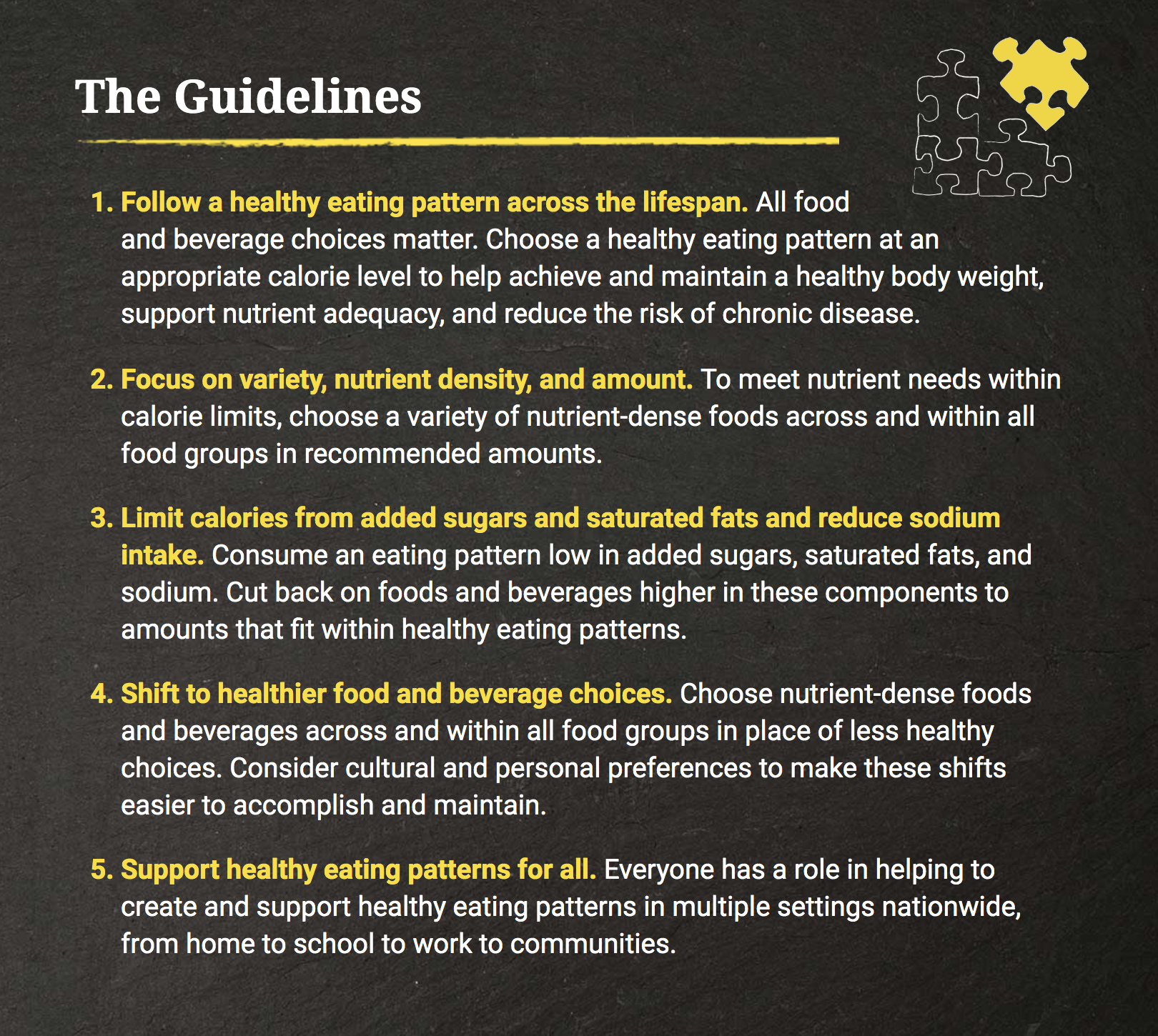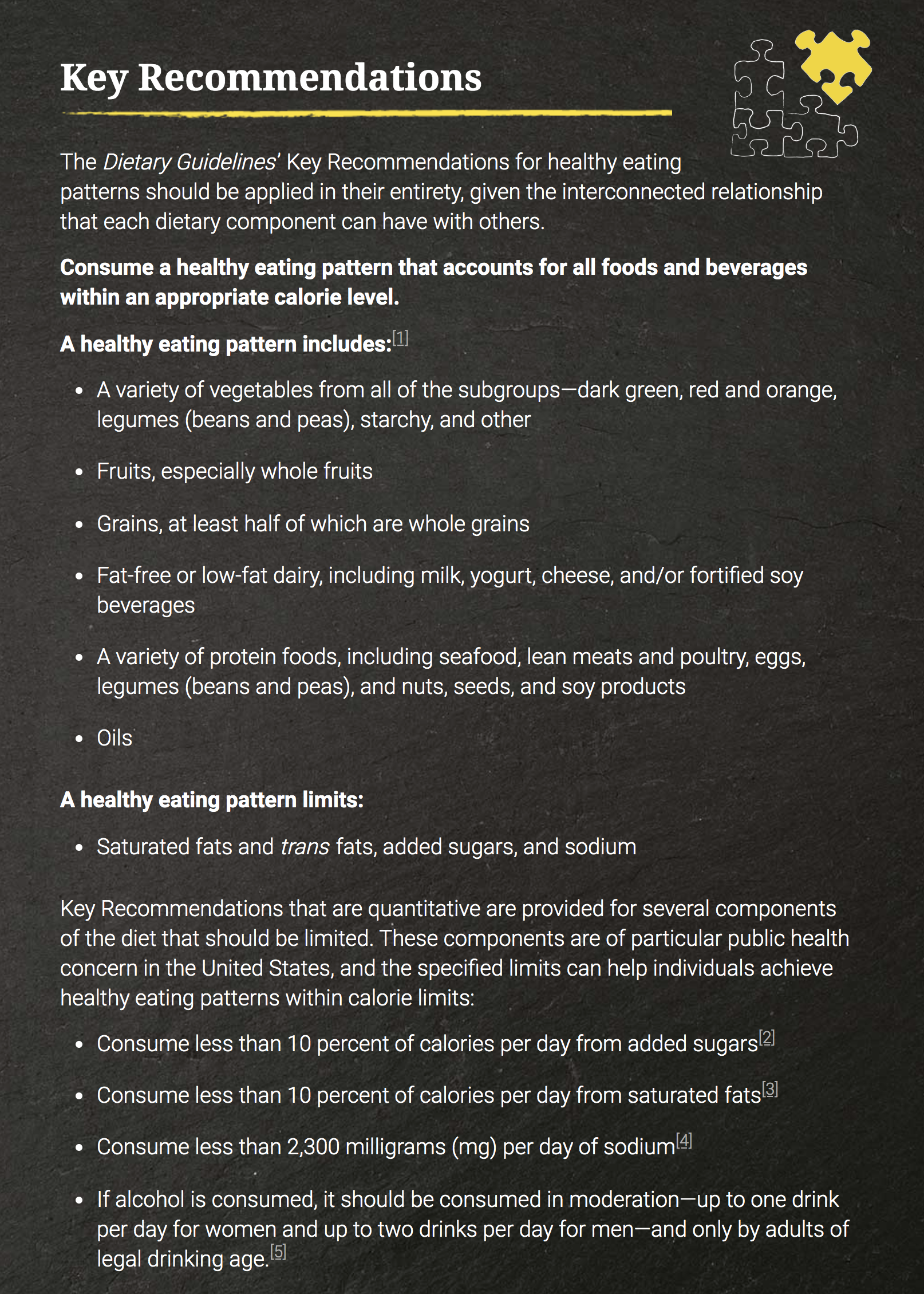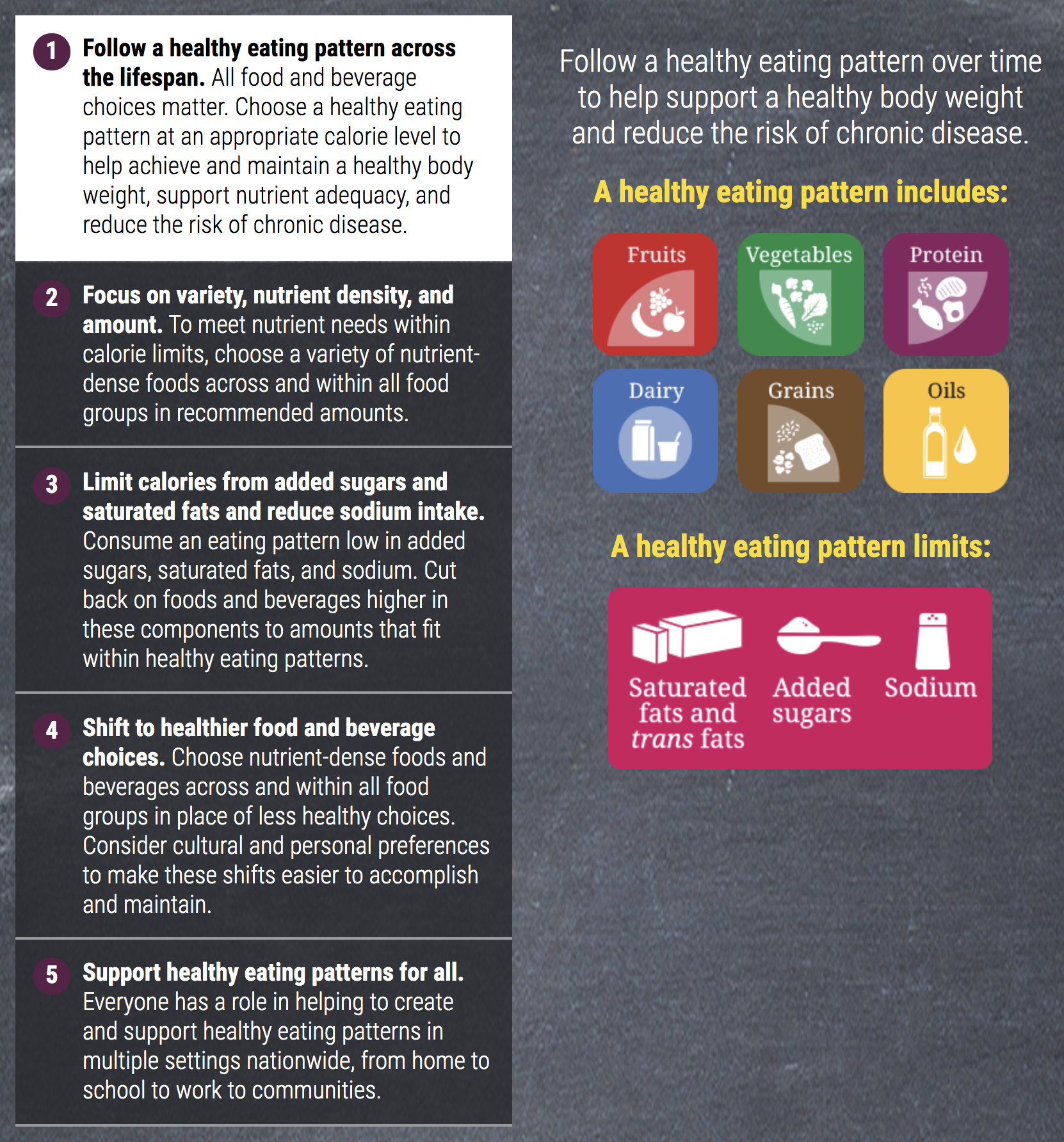Over the past century, deficiencies of essential nutrients have dramatically decreased, many infectious diseases have been conquered, and the majority of the U.S. population can now anticipate a long and productive life. At the same time, rates of chronic diseases—many of which are related to poor quality diet and physical inactivity—have increased. About half of all American adults have one or more preventable, diet-related chronic diseases, including cardiovascular disease, type 2 diabetes, and overweight and obesity.
However, a large body of evidence now shows that healthy eating patterns and regular physical activity can help people achieve and maintain good health and reduce the risk of chronic disease throughout all stages of the lifespan. The 2015-2020 Dietary Guidelines for Americans reflects this evidence through its recommendations.
The Dietary Guidelines is required under the 1990 National Nutrition Monitoring and Related Research Act, which states that every 5 years, the U.S. Departments of Health and Human Services (HHS) and of Agriculture (USDA) must jointly publish a report containing nutritional and dietary information and guidelines for the general public. The statute (Public Law 101-445, 7 U.S.C. 5341 et seq.) requires that the Dietary Guidelines be based on the preponderance of current scientific and medical knowledge. The 2015-2020 edition of the Dietary Guidelines builds from the 2010 edition with revisions based on the Scientific Report of the 2015 Dietary Guidelines Advisory Committee and consideration of Federal agency and public comments.
The Dietary Guidelines is designed for professionals to help all individuals ages 2 years and older and their families consume a healthy, nutritionally adequate diet. The information in the Dietary Guidelines is used in developing Federal food, nutrition, and health policies and programs. It also is the basis for Federal nutrition education materials designed for the public and for the nutrition education components of HHS and USDA food programs. It is developed for use by policymakers and nutrition and health professionals. Additional audiences who may use Dietary Guidelines information to develop programs, policies, and communication for the general public include businesses, schools, community groups, media, the food industry, and State and local governments.
Previous editions of the Dietary Guidelines focused primarily on individual dietary components such as food groups and nutrients. However, people do not eat food groups and nutrients in isolation but rather in combination, and the totality of the diet forms an overall eating pattern. The components of the eating pattern can have interactive and potentially cumulative effects on health. These patterns can be tailored to an individual’s personal preferences, enabling Americans to choose the diet that is right for them. A growing body of research has examined the relationship between overall eating patterns, health, and risk of chronic disease, and findings on these relationships are sufficiently well established to support dietary guidance. As a result, eating patterns and their food and nutrient characteristics are a focus of the recommendations in the 2015-2020 Dietary Guidelines.
The 2015-2020 Dietary Guidelines provides five overarching Guidelines that encourage healthy eating patterns, recognize that individuals will need to make shifts in their food and beverage choices to achieve a healthy pattern, and acknowledge that all segments of our society have a role to play in supporting healthy choices. These Guidelines also embody the idea that a healthy eating pattern is not a rigid prescription, but rather, an adaptable framework in which individuals can enjoy foods that meet their personal, cultural, and traditional preferences and fit within their budget. Several examples of healthy eating patterns that translate and integrate the recommendations in overall healthy ways to eat are provided.

Key Recommendations provide further guidance on how individuals can follow the five Guidelines:

An underlying premise of the Dietary Guidelines is that nutritional needs should be met primarily from foods. All forms of foods, including fresh, canned, dried, and frozen, can be included in healthy eating patterns. Foods in nutrient-dense forms contain essential vitamins and minerals and also dietary fiber and other naturally occurring substances that may have positive health effects. In some cases, fortified foods and dietary supplements may be useful in providing one or more nutrients that otherwise may be consumed in less-than-recommended amounts.
For most individuals, achieving a healthy eating pattern will require changes in food and beverage choices. This edition of the Dietary Guidelines focuses on shifts to emphasize the need to make substitutions—that is, choosing nutrient-dense foods and beverages in place of less healthy choices—rather than increasing intake overall. Most individuals would benefit from shifting food choices both within and across food groups. Some needed shifts are minor and can be accomplished by making simple substitutions, while others will require greater effort to accomplish.
Although individuals ultimately decide what and how much to consume, their personal relationships; the settings in which they live, work, and shop; and other contextual factors strongly influence their choices. Concerted efforts among health professionals, communities, businesses and industries, organizations, governments, and other segments of society are needed to support individuals and families in making dietary and physical activity choices that align with the Dietary Guidelines. Everyone has a role, and these efforts, in combination and over time, have the potential to meaningfully improve the health of current and future generations.
2015-2020 Dietary Guidelines for Americans at a Glance
The 2015-2020 Dietary Guidelines focuses on the big picture with recommendations to help Americans make choices that add up to an overall healthy eating pattern. To build a healthy eating pattern, combine healthy choices from across all food groups—while paying attention to calorie limits, too.
Check out the 5 Guidelines that encourage healthy eating patterns:

Original source: https://health.gov/our-work/food-nutrition/2015-2020-dietary-guidelines/guidelines/executive-summary/